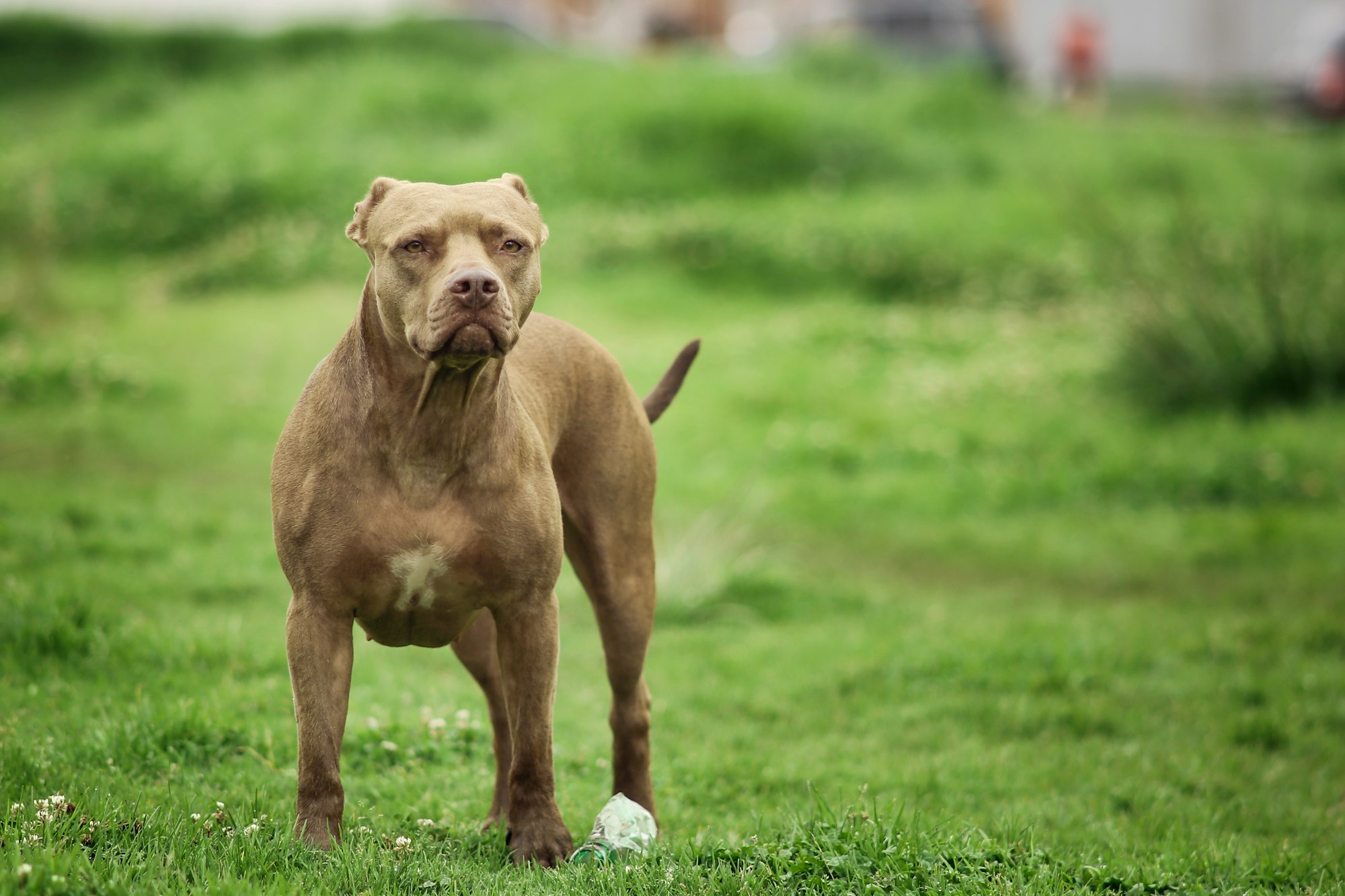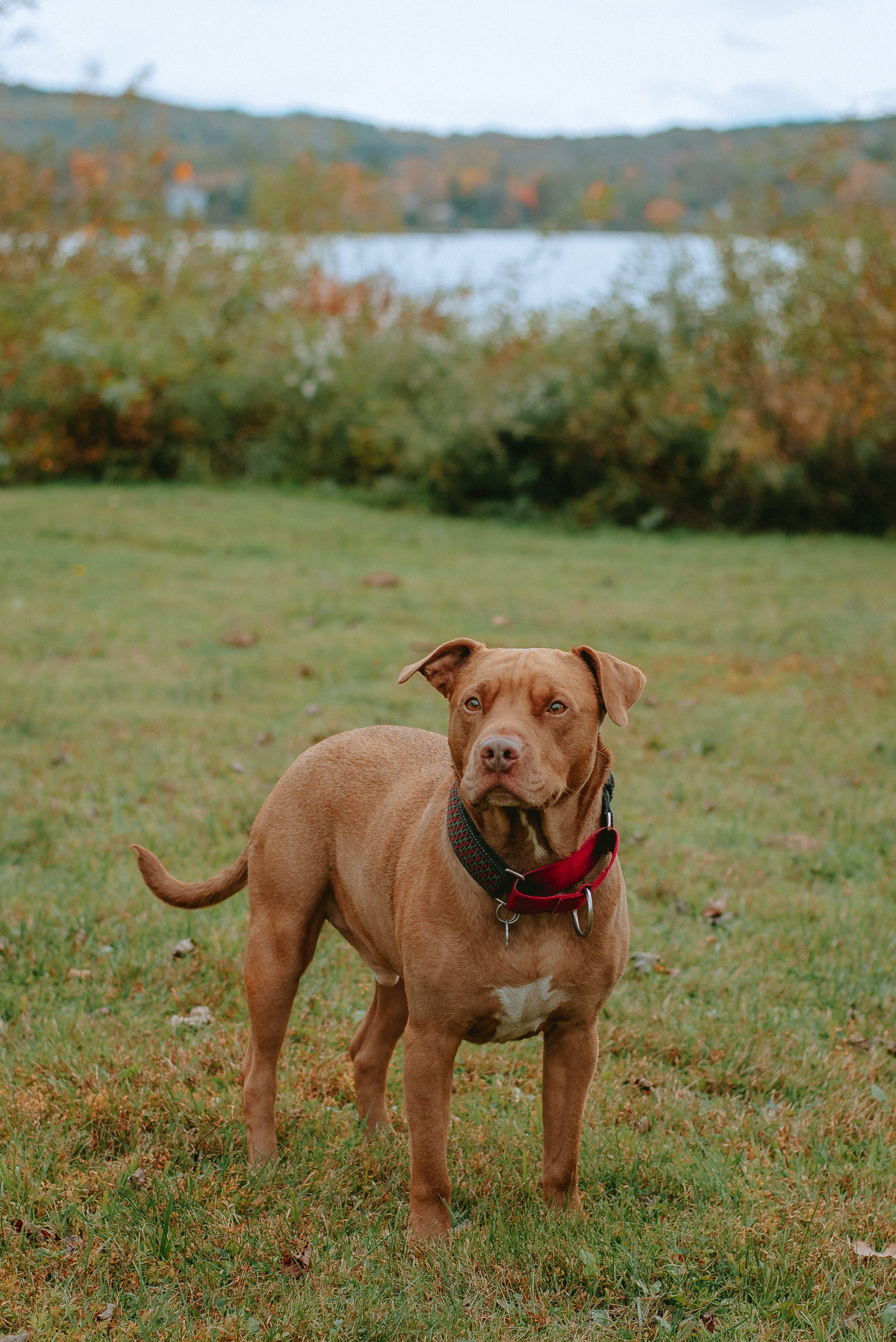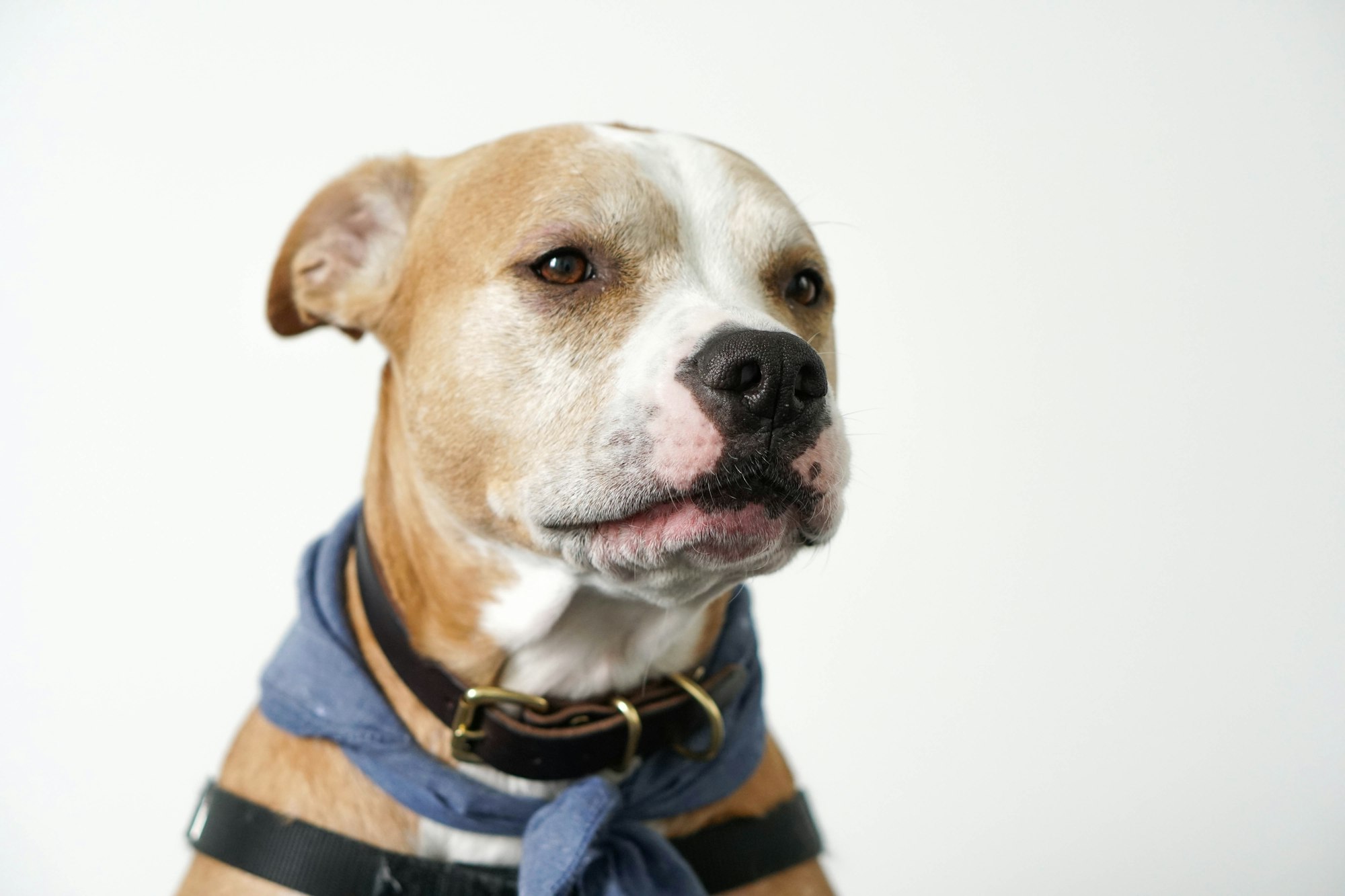Welcome to the world of Pitbulls - a world teeming with strength, loyalty, and a dazzling array of breed variations. It's about time we shed some light on these different types of Pitbulls, their histories, and what makes each variety unique.
Pitbulls are known for their strength and tenacity, but they are often misunderstood. They are incredibly loving, loyal, and intelligent animals. To further appreciate these dogs, we must first understand the various types.
Diving into the Different Pitbull Breeds
American Pitbull Terrier
When you think of a Pitbull, it's likely that the American Pitbull Terrier comes to mind first. They are often associated with strength, confidence, and a zest for life. A striking feature of the American Pitbull Terrier is their broad smile which showcases their playful and energetic nature.

Staffordshire Bull Terrier
Staffordshire Bull Terriers, affectionately known as 'Staffies,' are the British counterparts to the American Pitbull Terrier. Originally bred for bull-baiting, they're now cherished for their affectionate nature and love for children, earning them the nickname 'nanny dog.'
Blue Nose and Red Nose Pitbull
Blue Nose and Red Nose Pitbulls are not different breeds, but rather variations within the American Pitbull Terrier breed. The names simply refer to the color of their nose and coat. Despite common misconceptions, their nose color does not determine their temperament or health issues.
American Bully
The American Bully is a newer breed, developed in the late 20th century, with the intention of creating a family-friendly pet. They are muscular and heavier set than their Pitbull counterparts, but share the same loving and protective nature.
Pitbull Health Issues and Care
Like all breeds, Pitbulls are prone to certain health conditions. One of the most common is hip dysplasia, a genetic condition that can lead to mobility problems. Another potential issue to be aware of is the brachycephalic syndrome. Although this is more common in flat-faced breeds, it can occur in Pitbulls.
Beyond potential health issues, Pitbulls, like all dogs, are prone to fleas. Regular checks and appropriate treatments are necessary to keep them healthy and comfortable.
The Wonders of Training: From Therapy to Scent Work
Pitbulls are versatile dogs, capable of excelling in many areas of training. They have even been known to be successful therapy dogs, providing comfort and support to those in need.
Scent work is another area where Pitbulls can excel. Their keen noses, combined with their focus and drive, make them excellent candidates for this type of training. Not to mention, it's a great way to provide both physical and mental exercise for your dog.
Hydration and Pitbulls
Never underestimate the importance of water for your Pitbull. Hydration plays a crucial role in their overall health and well-being. Regular access to fresh water aids in digestion, nutrient absorption, and overall bodily functions.
The Responsibility of Pitbull Ownership
Owning a Pitbull, or any dog for that matter, is a great responsibility. These dogs are energetic and require plenty of exercise and mental stimulation. They also need a balanced diet, regular veterinary check-ups, and most importantly, lots of love and attention.
So, there you have it - a comprehensive look at the different types of Pitbulls. From the energetic American Pitbull Terrier to the affectionate Staffordshire Bull Terrier, each type brings something unique to the table. The journey through the world of Pitbulls is an exploration of strength, tenacity, loyalty, and love. Next time you see a Pitbull, you'll know there's more to them than meets the eye.
The Fascinating History Behind Pitbull Breeds
Every dog breed has a history that contributes to its unique qualities and characteristics. Let's delve into the interesting pasts of the different Pitbull types.

American Pitbull Terrier History
The American Pitbull Terrier descends from the bulldogs and terriers that were used in England for bull-baiting, a sport where dogs were used to pin and hold bulls by the nose. When this sport was banned in the 1800s, dog fighting became popular, and these breeds were used because of their strength and tenacity. Immigrants brought these dogs with them to America, where they began to be bred for their size and strength, eventually resulting in the breed we know today as the American Pitbull Terrier.
Staffordshire Bull Terrier History
Much like the American Pitbull Terrier, the Staffordshire Bull Terrier traces its roots back to England. Their history is similar, involving bull-baiting and later dog fighting. However, as time went on, they were bred to be smaller and more domesticated, leading to their popularity as a family pet in England and later in America.
Blue Nose and Red Nose Pitbull History
The Red Nose Pitbulls originated in Ireland and were initially known as "Old Family Red Nose" (OFRN). The Blue Nose Pitbull doesn't have a distinct history as it's not a separate breed but rather a color variation of the American Pitbull Terrier. The unique blue color comes from a recessive gene, making them less common and highly sought after.
American Bully History
The American Bully is a fairly new breed, only recognized officially in the 1990s. Breeders aimed to create a dog with the strength and physique of the Pitbull breeds, but with a more relaxed and friendly temperament. This makes the American Bully an excellent companion dog, beloved for its loyalty and gentleness.
Understanding Pitbull Mix Breeds
The world of Pitbulls isn't limited to pure breeds. A plethora of Pitbull mixes bring even more diversity to this dog group. Some popular mixes include the Pitbull Lab mix (known as a Labrabull or Pitador) and the Pitbull Husky mix (also known as a Pitsky). Each mix brings out unique traits, combining the best of both parent breeds.
Adopting a Pitbull
When it comes to adopting a Pitbull, preparation is key. You'll want to ensure your home is suitable for an energetic and potentially large dog. Due to their history, some Pitbulls can be wary of strangers and other dogs. Socialization from a young age is paramount to raise a well-adjusted dog.
Consider adopting from a rescue center or a shelter. Many wonderful Pitbulls and Pitbull mixes are waiting for their forever homes, and adoption gives them a second chance at life.

Pitbulls are an incredibly diverse and fascinating group of dogs, each with unique traits, capabilities, and charm. By better understanding these different types of Pitbulls, we can appreciate them for the remarkable dogs they truly are. Whether you're considering adopting a Pitbull, or you're just a dog lover wanting to learn more, remember that every dog deserves love, care, and understanding, regardless of its breed or type.
Training Your Pitbull: Where to Begin?
Training is an essential part of any dog's life, but particularly so for breeds as active and intelligent as Pitbulls. Early training and socialization play a vital role in shaping the personality and behavior of your dog.
Basic Obedience Training
Start with the basics, such as sit, stay, down, and come. These commands are the foundation of good behavior. Pitbulls are eager to please and quick to learn, which can make training an enjoyable process.
Socialization
The next step in your Pitbull's training journey is socialization. This involves exposing your puppy to a wide variety of experiences, environments, and people. Regular social interaction from a young age can help to prevent behavioral issues later in life.
Advanced Training
Once your Pitbull has mastered the basics, you can consider advanced training such as agility, scent work, or even therapy dog training. Pitbulls are versatile and capable dogs that can excel in a variety of roles.
Consistency is Key
Whatever type of training you choose for your Pitbull, consistency is vital. Regular training sessions, consistent commands, and steady rewards will help your dog understand what is expected of them.
Recognizing and Addressing Misconceptions
Unfortunately, Pitbulls are often subject to misconceptions and stereotypes. One commonly held belief is that all Pitbulls are aggressive, a notion that couldn't be further from the truth.
The behavior of a dog is less about its breed and more about how it's raised and trained. Pitbulls, like all dogs, are individuals, each with their own personality and quirks. Many Pitbulls are extremely loving, loyal, and well-behaved pets.
By learning more about the different types of Pitbulls and understanding their history, we can start to challenge these stereotypes. Education is key to changing perceptions and highlighting the many positive qualities that Pitbulls possess.
Training with Tech: Harness the Power of Fi Dog Collars
As we navigate the diverse world of Pitbull types and understand the importance of training and health for these breeds, it's equally important to discuss innovative tools that can assist us in taking care of our furry friends. One such innovative tool is the Fi Dog Collar.
The Power of Fi Dog Collars in Training
Training, as we know, plays an essential role in the life of a Pitbull. The Fi Dog Collar can be an excellent tool to aid in this process. Its state-of-the-art GPS technology allows owners to keep track of their dogs' locations, making it an excellent asset during outdoor training sessions.
Furthermore, the Fi Dog Collar allows you to set up safe zones, such as your backyard or home. If your Pitbull steps out of these zones, you get an alert on your phone. This feature could be particularly useful during the socialization phase of training, providing an added layer of security when introducing your Pitbull to new environments.
Activity Tracking and Health
In addition to the GPS functionality, Fi Dog Collars also track your dog's activity. This feature can be particularly beneficial when monitoring your Pitbull's health. Remember that conditions like hip dysplasia can be common in Pitbulls. With the Fi collar, you can keep an eye on any significant changes in your dog's activity levels that might suggest discomfort or health issues.
Likewise, ensuring your Pitbull has enough water is critical, and seeing a sudden drop in activity levels could be a sign of dehydration. As with all health matters, it's always important to consult with a vet if you have concerns.
Safety Measures
In addition to training and health monitoring, the Fi Dog Collar can provide an added safety measure. Pitbulls are known for their strength and agility, and the Fi collar is designed to match this hardiness. It's chew-proof, water-resistant, and has a battery that can last up to three months on a single charge.
Conclusion:
In the diverse world of Pitbulls, each breed and mix showcases unique traits, stemming from intriguing histories. Whether it's the loyal American Pitbull Terrier or the affectionate Staffordshire Bull Terrier, understanding each type enhances our appreciation.
Responsible ownership involves proactive training, socialization, and care, with particular attention to health issues like hip dysplasia. Technological tools like Fi Dog Collars can assist us, aiding in training, health monitoring, and safety. As we navigate this rewarding journey, we realize the importance of mutual love, respect, and understanding in fostering a thriving bond with these remarkable dogs.
Frequently Asked Questions (FAQs)
1. What are the different types of Pitbulls?
There are several types of Pitbulls, each with unique characteristics. These include the American Pitbull Terrier, the Staffordshire Bull Terrier, the American Staffordshire Terrier, and the American Bully.
2. What is the history of Pitbull breeds?
Pitbull breeds trace their origins to England, where they were used in bull-baiting and later dog fighting. Immigrants brought these dogs to America, where they were bred for different purposes, resulting in the various Pitbull breeds we know today.
3. How can I train my Pitbull effectively?
Training your Pitbull involves starting with basic obedience commands, then moving on to socialization, and potentially advanced training like agility or scent work. Using tools like the Fi Dog Collar can also aid in training and monitoring your dog's activity levels.
4. What are some common health issues in Pitbulls?
Pitbulls can be prone to certain health conditions like hip dysplasia and brachycephalic syndrome. Regular veterinary check-ups and monitoring your Pitbull's activity and behavior can help in early detection and treatment of these conditions.
5. Can Fi Dog Collars be beneficial for my Pitbull?
Absolutely! Fi Dog Collars can be a valuable tool for any Pitbull owner. They aid in training, help monitor your dog's health by tracking activity levels, and provide an additional safety measure with GPS tracking.
6. What are some misconceptions about Pitbulls?
Unfortunately, Pitbulls are often stereotyped as aggressive dogs. This misconception overlooks the fact that many Pitbulls are incredibly affectionate and loyal. Behavior is often more dependent on training and treatment than breed.
7. Where can I adopt a Pitbull?
Many rescue centers and shelters have Pitbulls and Pitbull mixes that are looking for their forever homes. Adopting from these organizations can give a deserving dog a second chance at a happy life.
8. Can Pitbulls make good family dogs?
Yes, many Pitbulls make excellent family dogs. They are known for their loyalty and love of people. Early socialization and training are important in raising a well-behaved and sociable dog.




